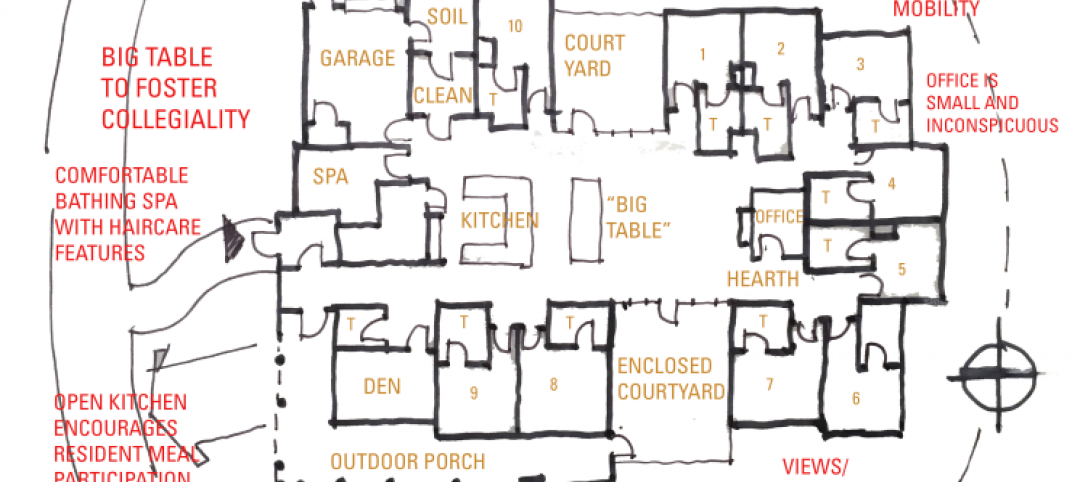The nearly 7,100 urgent care centers operating in the U.S. see nearly 160 million patients a year, according to the latest estimate by the Urgent Care Association of America (UCAOA). To say the competition for these patients is fierce would be an understatement: Urgent care is about as close to retail as healthcare gets.
According to the UCAOA’s 2015 “Benchmarking Survey,” urgi-centers are open an average 4,100 hours a year (equivalent to about 12 hours a day); 96% are open seven days a week. One-third (34.1%) are located in shopping centers or strip malls; another third (33.2%) are in freestanding buildings. The rest are in medical office buildings (19.1%) and mixed-used facilities (13.6%). Physician groups and investors own the greatest share of urgi-clinics, nearly 40%.
For-profit retail chains predominate, led by the Concentra division of Select Medical (300 urgi-centers in 40 states) and U.S. HealthWorks Medical Group (174 centers, 21 states). Corporate and non-physician investors control 23% of urgi-clinics, according to the UCAOA.
Health systems have been developing their own networks of urgent care clinics. Hospitals, either individually or in joint ventures, run 37% of U.S. urgent care centers. Ted Matson, Vice President of Strategy for Sutter Health, which operates 24 urgent cares in Sacramento, Calif., recently compared these clinics to retail shopping centers because they provide lower cost and faster service compared to visiting a doctor’s office.
Other health systems with multiple urgent care centers in their portfolios: Dignity Health, which operates 41 urgi-clinics under its banner, with eight more planned for this year (in 2013, Dignity acquired U.S. HealthWorks, which operates more than 200 occupational health and urgent care centers in 22 states); Centra Care – Florida, Maryland, and Kansas (38); Aurora Health Care – Wisconsin (34); Intermountain Health Care – Utah (32, plus six co-located pediatric urgent care centers); and Carolinas HealthCare System – North Carolina (29).
“Design is now focused on branding,” says Luis Cano, AIA, LEED AP, EDAC, NCARB, Principal and Senior Vice President in the Miami office of Gresham Smith and Partners.
GS&P designed its first urgent care center 14 years ago. Since then its healthcare work has been exclusively for hospitals, which see urgent care as a way to “project their influence into geographic areas where they otherwise wouldn’t be,” says Cano. Architecturally, he says, the brand “perpetuates the cohesiveness of the healthcare system.”
GS&P’s hospital clients don’t usually come in with preconceived ideas for the design of their clinics, but they do know what works for them, says Cano. “They listen to us, and what we come up with could be a different solution for each client,” he says.
GS&P is the architect on two urgent care centers for Jackson Health System, which last September opened its first UHealth Jackson Urgent Care center, a 4,100-sf facility in Miami’s Country Walk Plaza. In 2017, Jackson Health System plans to open urgi-cinics in North Miami, Doral, and Cutler Bay, and at its existing North Dade Health Center, Miami Gardens.
Other AEC firms involved in UHealth Jackson projects: MGE Architects, G&G Engineering Group, Gartek Engineering, RC Construction, Harbour Construction, and BDI Construction.
Brian Martin, AIA, LEED AP, EDAC, Senior Designer in SmithGroupJJR’s Healthcare Studio, in Washington, D.C., is also seeing urgent care centers popping up in local retail spaces. “We have to design them for the specific needs of their locations,” which he says limits his firm’s leeway over the design.
Urgent care centers are considered ambulatory construction, using a B-plus business occupancy standard. Their construction budgets are bare bones. “They are not intended to be flagships,” says Martin.
Martin believes the Walmartization of healthcare at the retail level will continue. His firm has worked with one of the nation’s biggest healthcare systems, Kaiser Permanente, to develop what could be a template for urgent care centers. “The providers are realizing cost efficiencies on their own,” he says.
Related Stories
Healthcare Facilities | Jun 10, 2016
Top 10 health technology hazards include some influenced by space design
ECRI Institute’s annual list includes operational and workflow issues.
Healthcare Facilities | May 30, 2016
CBRE finds that investors are still flocking to healthcare sector
Over the past year, healthcare accounted for nearly one-fifth of all new jobs in the U.S.
Big Data | May 27, 2016
Analytics alone won't save money for healthcare facility owners
Advanced technology provides insight into the actions necessary to cut costs, but it's the people, processes, and implementation that make a difference with analytics, writes CBRE's Paul Oswald.
Hospital Design Trends | May 19, 2016
CannonDesign releases new white paper on advancements in operating room environments
"Surgical Suites: Emerging Approaches to Planning and Design" offers solutions for collaboration and technology integration.
Healthcare Facilities | May 6, 2016
Infographic: The greening of healthcare
By adopting green building and sustainable practices, healthcare facilities can save $15 billion over 10 years. Skanska's infographic spells it all out.
Healthcare Facilities | Apr 29, 2016
How improving emergency department design leads to greater hospital efficiency
Efficient ED operations result in shorter wait times, quicker diagnosis and care plans, maximum utilization of high-cost human and physical resources, and overall better patient experiences and patient satisfaction scores, writes CBRE Healthcare's Curtis Skolnick.
Healthcare Facilities | Apr 24, 2016
A symposium in New Jersey examines how a consolidating healthcare industry can better manage its excess real estate
As service providers position themselves closer to their communities, they are looking for ways to redirect non-core buildings and land for other purposes.
Senior Living Design | Apr 14, 2016
Creating a home for eldercare using the ‘Green House’ design concept
VOA Associates’ Douglas King offers design considerations in implementing the Green House concept in eldercare for continuing care retirement communities.
Adaptive Reuse | Apr 7, 2016
Redevelopment plan announced for Chicago’s historic Cook County Hospital
The century-old, Beaux Arts architecture-inspired hospital will transform into a mixed-use development.
Industry Research | Apr 7, 2016
CBRE provides latest insight into healthcare real estate investors’ strategies
Survey respondents are targeting smaller acquisitions, at a time when market cap rates are narrowing for different product types.
















